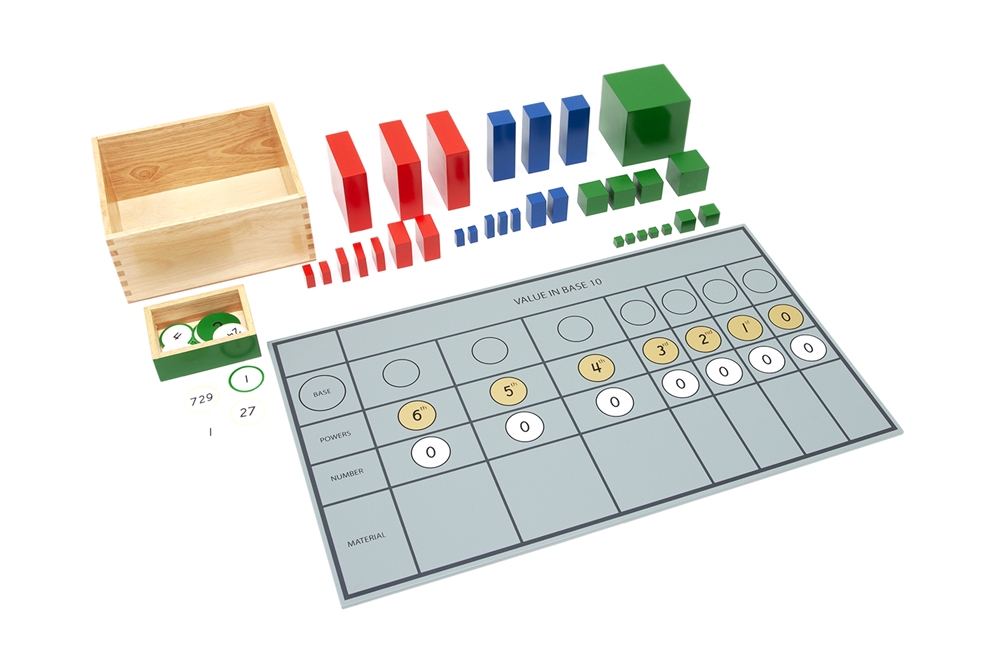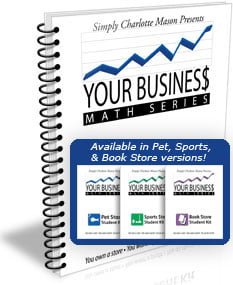We strive to be keys-based around here. I provide the keys and the opportunities, my son uses them to their fullest potential at the right times.
Great.
Until I won a giveaway through Alison's Montessori for a beautiful, non-essential, non-keys Power of 3 Cube. This is an *abstract* presentation in my album - it is not intended to utilize a material because at that point, the material becomes a crutch to the child. If the child needs a material at this point, the child *creates* the material himself.
So. We're using that one for sensorial exploration for now - as a puzzle - in lower elementary; then I will pull it from the available materials for upper elementary. It's a neat little "puzzle" so I'm ok with that.
But then I placed an order for our remaining Montessori materials several weeks ago. Received everything; then realized I still have a couple of small purchases to make. Oops. That company doesn't have those things anyway, so it's fine. I get my list ready and figure out how much money we'll need to save and I have it ready for the right time. Ok :)
But then I went and pulled this out of storage (given to us a while back - I'd tucked it away without thoroughly checking it beforehand). I thought it was the Non-Decimal Base Board, but I never thought to wonder what was in the BOX (non-decimal base board does not require a box).
 |
| This is the one sold at Alison's' - ours is identical, but I don't know where we got it. It's pretty - it looks neat - but it is definitely NOT an essential material. Why do companies sell the non-essentials and LEAVE OUT so many of the essentials? |
I am now the keys-based, flummoxed owner of TWO non-keys-based materials that I didn't know I was getting! ;)
I *thought* it was the board for Non-Decimal Bases. But it's not. And I have *nothing* in my albums for this Multi-Base material. Thus it could be a great work to do! But it is not keys-based - it is an extra. I am "ok" with that to an extent, but if I can't figure it out in under 30 seconds, with my experience and training, then is it really going to be necessary for the child?
NO.
But my son MIGHT be interested in it and it might make a FANTASTIC follow-up if that is where his interests go (no, the local educational requirements in our area will not require what this board teaches, so I can't even pull it in for that purpose!).
Wish I'd double-checked first! Because now I don't have the Non-Decimal Bases board - but that should be easy enough to just draw out on posterboard. And anyone else who needs Non-Decimal Bases Board and you've already made a chart for primary use of organizing the golden beads into their categories (that chart being another non-essential material that could be useful and even necessary in some cases - it is 4 columns, with a row at the top to designate that units, bars, squares or cubes go in a particular column)... Just use that! Fine. I'm good with that. Easy and cheap!
But what do I do with this Multi-Base material? I am flummoxed and, frankly, borderline annoyed - both at myself for not checking a long time ago and at companies for making this stuff. I am looking for an album page, a set of album pages - or someone to just tell me which company sells an album that has it - just to save me time figuring it out and making up the album page(s) myself.
Any ideas?
I have contacted 5 companies who sell it, of the 3 who have responded thus far, they have no idea either! So my next question is where did they get the instructions on how to make the material? Many of the discount places get their materials from the same place in China I am sure, but not everyone gets their stuff from there; so where did the original pattern come from?
It is very sad and very disheartening that the gray line between "essential" and "extra" (but could still be good) is so blurred, that there are sometimes "extras" that just aren't even good, but are still being called Montessori - but that is for other posts!
Downer post - sorry! It gets better tomorrow!
(UPDATE 12/29/12: All but two companies have responded back to me; I contacted 3 others who all responded. Not a one of them has any clue how to use this material, or even where the pattern actually came from. Wow.
This pdf document makes ONE reference to it:
Workshop
“How Mathematics forms the brain–Montessori and
Multi-base Material” by Ms Han Kamphuis, pedagogical
consultant at Nienhuis.
Thus it appears to be AMI, and it appears to be relatively new.
Not one AMI elementary training center has responded to my messages, to date. Not even the one I attended.)
Will update further as anything new comes up.











.JPG)

































